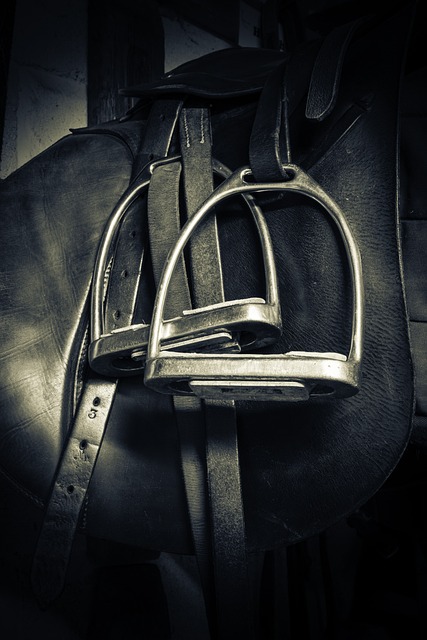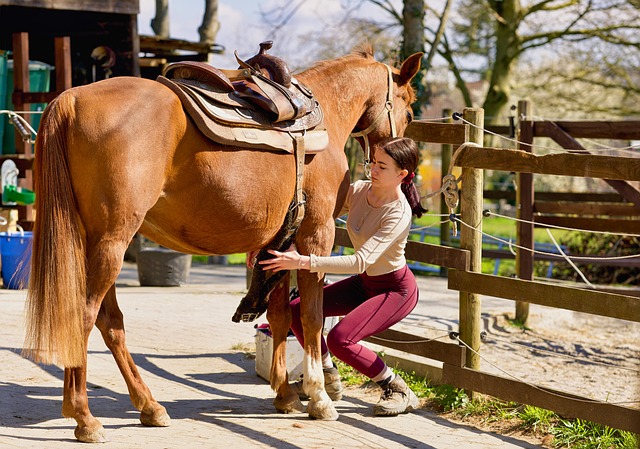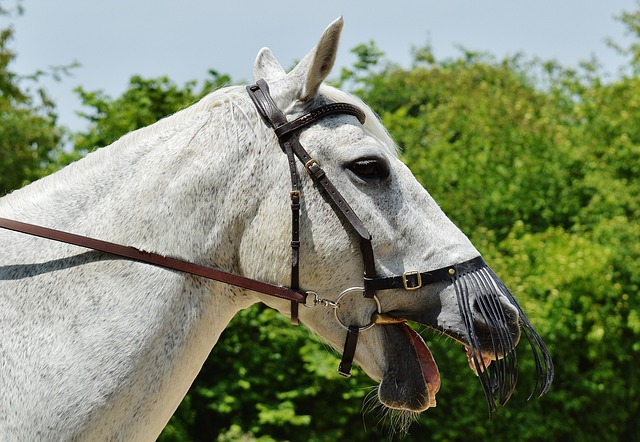
Stirrup Leathers
April 16, 2023
Numnahs and Saddle Pads
April 16, 2023A girth is an essential piece of horse tack that is used to secure the saddle in place on the horse’s back. Girths come in a variety of types and styles, each designed to meet the specific needs of different riding disciplines and individual horses. Here are some of the most common types of girths and their uses on horses:
- Dressage Girths: These girths are designed for use with dressage saddles and are typically longer than other types of girths. They are usually made of leather and have a contoured shape that allows for greater freedom of movement in the horse’s shoulders.
- Jumping Girths: These girths are designed for use with jumping saddles and are typically shorter than dressage girths. They may have elastic inserts that allow for greater flexibility and comfort for the horse.
- Western Cinches: These are girths designed for use with Western saddles. They are usually made of leather or synthetic materials and may be decorated with silver or other embellishments. Western cinches can be either a single cinch or a double cinch, depending on the style of saddle.
- Endurance Girths: These girths are designed for use in long-distance endurance riding. They are typically made of synthetic materials that are lightweight and easy to clean, and may have additional padding for the horse’s comfort.
- Stud Girths: These girths have additional straps or loops that allow for the attachment of protective equipment, such as jumping boots or polo wraps. They are commonly used in eventing and show jumping.
- Anatomic Girths: These girths have a curved or contoured shape that follows the natural shape of the horse’s ribcage. They are designed to distribute pressure more evenly across the horse’s chest and can be particularly useful for horses with sensitive skin or a tendency to develop girth sores.
When choosing a girth, it’s important to consider the type of riding you will be doing and the specific needs of your horse.
Checking your girth’s condition and tightness before mounting your horse is an essential safety precaution that should never be overlooked. Here are some reasons why:
- Security: A properly tightened girth ensures that the saddle is securely fastened to the horse’s back. If the girth is loose or improperly fitted, the saddle can shift or slide, which can cause the rider to lose balance or even fall off.
- Comfort: A loose or ill-fitting girth can cause discomfort and chafing for the horse, which can lead to girth sores and other health issues.
- Communication: A horse may respond to discomfort caused by a loose or ill-fitting girth by displaying undesirable behavior, such as bucking, rearing, or refusing to move forward. By ensuring that your girth is properly tightened and fitted, you are able to communicate effectively with your horse and maintain safe control.
The dangers of riding with a loose or improperly fitted girth can be severe. In addition to the risk of falling off, a loose girth can cause the saddle to twist, which can create uneven pressure on the horse’s back and cause pain and discomfort. A poorly fitted girth can also cause the saddle to sit too far forward or too far back, which can cause the rider to lose balance and control.
To prevent these dangers, it’s important to check your girth’s condition and tightness before mounting your horse. Inspect the girth for signs of wear and tear, such as cracks, splits, or loose stitching. Make sure that the girth is properly fitted to your horse’s body shape and that it is tightened securely. Always check your girth again after a few minutes of riding, as it may loosen over time.
By taking the time to properly inspect and tighten your girth, you can ensure the safety and comfort of both you and your horse.




